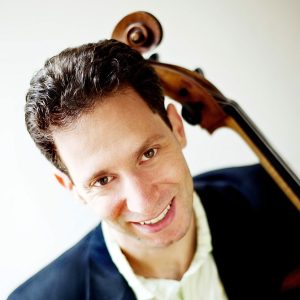
Behind the Scenes of a Music Festival (Part 3): The Rehearsal Mine Field
Aron Zelkowicz
Quartet rehearsal, 10 am! Which means you show up at 10:04, but then decide to make a quick Starbucks run with the second violinist because the violist is parking his car anyway and seriously, who can be expected to tackle Shostakovich at 10am without their Grande Vanilla Double Soy Macchiato? You return to discuss next week’s rehearsal schedule because there have been just too many e-mails lately (and of course, what are we wearing for the concert?). You take the opportunity to xerox that missing page of your part, unfold your stands, rosin your bows, and then, finally, you’re ready….to tune. It’s ok, no big deal—10:27 is plenty early to start rehearsing. There is always tomorrow, and the next day, and the next.
Such may be the way of the undergrad string player, or the young chamber group transitioning to a career after school. Those of us fortunate to have a supportive team of talented, like-minded peers have the luxury to smudge the line between working and socializing, friends and colleauges, payed time vs. leisure time.
As the director of a small annual music festival (the Pittsburgh Jewish Music Festival), I’ve also been greatly fortunate to work with top-notch players with whom I get along. In most cases what became friendships were originally based on a successful musical relationship. That is to say, a successful business relationship, in which I’ve paid them. Not a king’s ransom, especially considering the amount of work that goes into any given chamber music concert, but paid them nonetheless.
One of the advantages of producing a classical music festival (and growing up) in a relatively small city like Pittsburgh is that I’ve had the opportunity to get to know all corners of the tight-knit music community. Members of the Pittsburgh Symphony Orchestra, Pittsburgh Opera and Ballet Orchestras, and faculty members of the local music schools (Duquesne University and Carnegie Mellon University) have been eager and grateful for the opportunity to add to their regular musical routines. Working with these professionals, though, requires one to apply the same standard that they demand of their day jobs. Briefly put, respect for their schedules remains paramount. Especially when full-time orchestral players who go on stage every week with new repertoire commit to your two three-hour rehearsals and a dress rehearsal on top of their “day job,” you’d better be sure that a) the schedule is realistic, and b) you stick to the promised time allotment.
Any performance needs the proper environment to achieve optimal results, and so, too, do your valuable rehearsals. Your musicians are offering you not only their talent but also their time. Since you’ll want to take advantage of every minute, think about the kind of rehearsal environment you are creating. Is the atmosphere one of concentration or distraction? Is the ratio of playing to discussion to gossip 5:4:1 or 1:1:8? Is the cell phone ever-primed to interrupt the proceedings with the latest phone call, text, tweet, status update…(hold on a sec, I really have to take this call).
And the most obvious point: do you have enough time? Do you have too much time? It can be tricky finding the right balance between “Omigod we haven’t even read through the entire piece and the concert is tomorrow” and “Can’t we please go home we’ve already played this piece through 18.5 times.” I can’t emphasize enough how related this question is to the music you’re playing. Given the type of repertoire that comes with a Jewish music festival, each year I invariably encounter a piece that belies the usual remedies of western notation and demands a more oral tradition of interpretation. That translates to the familiar rehearsal technique, “What do you have in measure 58?” Unmeasured melismatic passages have to be felt, paced, responded to, and “figured out.” A three-minute selection might require no more than a play-through, or it could take more than an hour to work out issues of coordination, intonation, and articulation.
Consciencious players will always have questions. For those who must keep to the clock, questions are a nice way of saying “interruptions.” Do yourself the favor and preemptively eliminate such time-drainers. Is everyone playing from the same edition? Does everyone have measure numbers? Does everyone have the same measure numbers? Are there recordings and scores that you can provide the players that might shed some light before rehearsals actually begin?
Apart from stylistic and technical considerations, how problematic is the actual score and parts you are using? PJMF’s recent series was three different chamber programs of largely obscure works without a strong (or any) performing tradition The otherwise gorgeous music we used proved to be a positive mine field of inconsistent articulations, wrong notes, different keys, bad notation, misjudged dynamic markings, illegible markings, missing measures—you name it! To crib from the Boy Scouts, “Be Prepared.” Have your pencil sharpened and coffee mug filled ahead of time, and embrace creating a great rehearsal environment.
Subjects: Chamber Music
